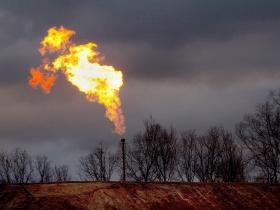Did Fracking Cause the Hawaii Volcano Eruption?

On the Big Island of Hawaii, where the Kilauea volcano has explosively erupted, there is a geothermal energy plant. It is the Puna Geothermal Venture (PGV) Plant, in Puna.
There is a long-running debate about whether PGV is fracking. The debate may be a matter of terminology, because in the geothermal process, as hawaiifracking.com reports, “…the drilling and the injection of cold water into hot rocks used in geothermal energy plants does fracture the rocks, which can induce earthquakes and through contamination of the atmosphere and water tables can affect our health and safety.”
Whether deep injection of fluid aims to capture oil, gas, or heat (geothermal), the beginning stage of the process is the same.
Earthquakes induced by this water-injection could obviously trigger a volcano.
For example, here is an alarming article about a geothermal project in Switzerland. Swissinfo.ch, December 10, 2009: “The authorities in canton Basel City say they will cancel a geothermal energy project, which three years ago caused minor tremors that damaged many buildings.”
“A risk analysis study published on Thursday found that the danger of setting off more earthquakes was too great if drilling at the site resumed.”
“The project was put on hold three years ago after thousands of claims for damage were filed with insurers. Total costs for the damage were around SFr9 million ($8.78 million).”
“The study, commissioned by the canton, concluded that Basel was ‘unfavourable’ for geothermal power generation.”
“It said the resumption of Deep Heat Mining project and its operation over a 30-year period could set off around 200 tremors with a strength of up to 4.5 on the Richter Scale – in 2006, the quakes were about 3.4.”
“This would result in damages up to SFr40 million.”
“The Basel facility drilled five kilometres into the earth. The borehole was designed to be injected with water to capture the extreme heat. Back at the surface, the hot water – at a temperature of around 160° Celsius – would run a steam turbine coupled with a generator.”
This Swiss article outlines the risks, and also confirms that deep water-injection is used in the geothermal process—which can and does trigger earthquakes.

